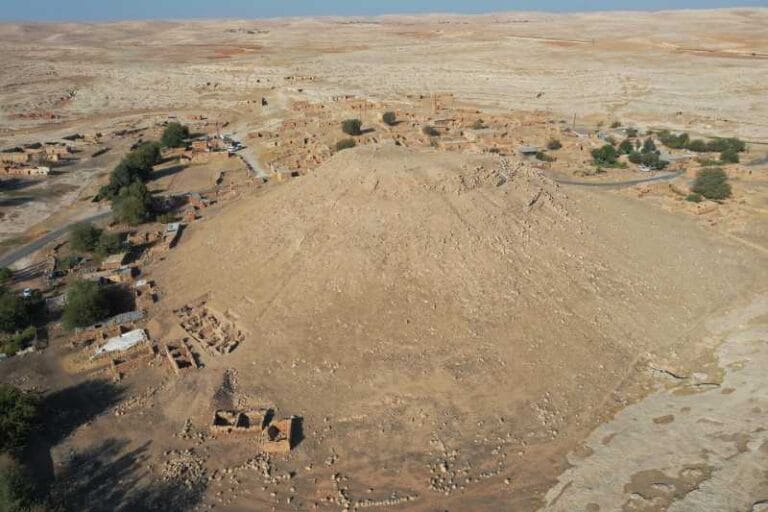Ancient Egypt’s largest astronomical observatory discovered.

A team of archaeologists from Egypt’s Supreme Council of Antiquities has made an impressive discovery at the temple of Buto, located in Tell El-Faraain, in the province of Kafr El-Sheikh. The team discovered the largest and oldest known Egyptian astronomical observatory, dating back to the 6th century B.C. This building, which covers an area of approximately 850 square meters, was built with mud bricks and was used for observing and recording astronomical phenomena, as well as tracking the movement of the sun and stars.
According to Dr. Mohamed Ismail Khaled, secretary general of the Supreme Council of Antiquities, this discovery not only highlights the capabilities of the ancient Egyptians in terms of astronomical knowledge, but also demonstrates the sophistication of the methods they employed to establish a solar calendar. He said: “This discovery sheds light on how they established the solar calendar and determined the dates of religious rituals and official ceremonies, such as the crowning of kings and the agricultural calendar. It also highlights the astronomical techniques used by the ancient Egyptians, despite the simplicity of the tools available, thus enriching our understanding of scientific and astronomical development in ancient times.”
Among the most remarkable finds inside the observatory is an inclined sundial, an essential tool for measuring time in antiquity. The structure of the observatory includes an organized sequence of limestone slabs, on top of which were arranged blocks also made of limestone, which probably had inclined lines to measure the solar inclination and shadows, making it easier to observe the movement of the sun throughout the day.

This building was found in the southwest corner of the temple and has a unique architectural design, with an entrance facing east and a central hall supported by columns, preceded by a sloping wall, characteristic of Egyptian propylaea.
Dr. Ayman Ashmawy, head of the Department of Egyptian Antiquities, provided more details about the find, explaining: “It was discovered in the southwest corner of the temple area and its architectural design includes an entrance facing east, towards the sunrise, and a central hall with L-shaped columns, preceded by a large mud-brick wall sloping inwards, similar to the style of Egyptian propylaea known from temple entrances.”

In addition, Ashmawy added: “A stone block fixed to the floor of a circular room was also found, along with two circular stone blocks to the north and west of the room, used to take measurements of the solar inclination during the seasons.”
The team also found several adobe brick rooms, which were probably used to store tools and equipment related to astronomical observation. One of these rooms was decorated with yellow mortar and adorned with scenes that included a drawing of a ritual boat, with the figure of the falcon god Horus and the Eye of Udjat, cosmic symbols associated with the sun, the moon and the main deities of Buto.

This discovery is in line with the efforts of Egypt’s Minister of Tourism and Antiquities, Shereef Fathy, to support local archaeological missions with the aim of revealing more secrets about the ancient Nile civilization.
The mission’s work at the temple of Buto not only enriches our knowledge of Egypt’s astronomical past, but also reaffirms the importance of protecting and studying archaeological sites in order to better understand human history and the development of ancient scientific knowledge.






